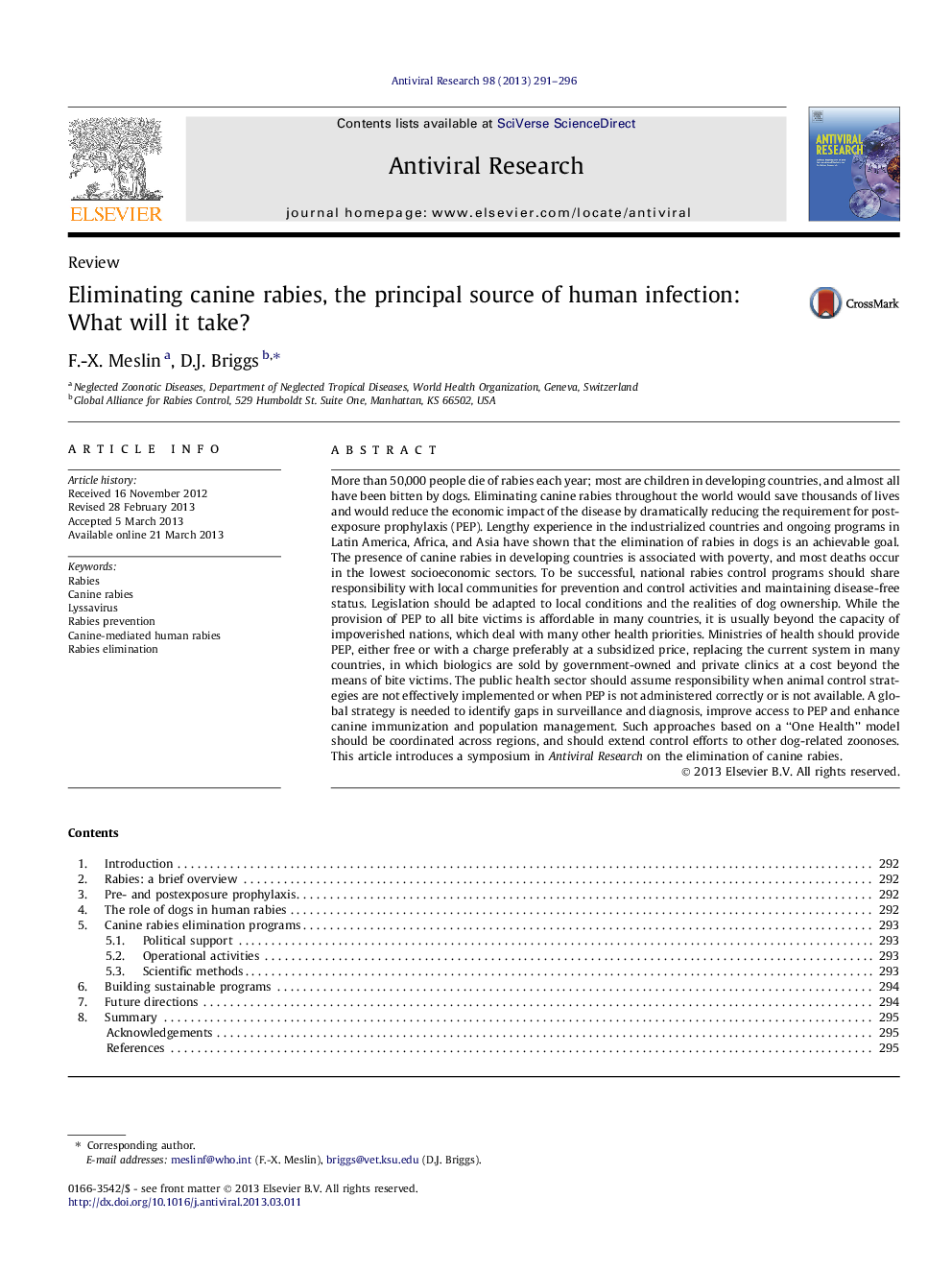| کد مقاله | کد نشریه | سال انتشار | مقاله انگلیسی | نسخه تمام متن |
|---|---|---|---|---|
| 2510197 | 1117959 | 2013 | 6 صفحه PDF | دانلود رایگان |

• Eliminating canine rabies in Africa & Asia would prevent 99% of human rabies deaths.
• Rabies has been eliminated in dogs in many areas, proving that it is possible.
• Local communities and governments should share responsibility for rabies control programs.
• A global strategy is required to identify gaps and improve rabies prevention.
More than 50,000 people die of rabies each year; most are children in developing countries, and almost all have been bitten by dogs. Eliminating canine rabies throughout the world would save thousands of lives and would reduce the economic impact of the disease by dramatically reducing the requirement for postexposure prophylaxis (PEP). Lengthy experience in the industrialized countries and ongoing programs in Latin America, Africa, and Asia have shown that the elimination of rabies in dogs is an achievable goal. The presence of canine rabies in developing countries is associated with poverty, and most deaths occur in the lowest socioeconomic sectors. To be successful, national rabies control programs should share responsibility with local communities for prevention and control activities and maintaining disease-free status. Legislation should be adapted to local conditions and the realities of dog ownership. While the provision of PEP to all bite victims is affordable in many countries, it is usually beyond the capacity of impoverished nations, which deal with many other health priorities. Ministries of health should provide PEP, either free or with a charge preferably at a subsidized price, replacing the current system in many countries, in which biologics are sold by government-owned and private clinics at a cost beyond the means of bite victims. The public health sector should assume responsibility when animal control strategies are not effectively implemented or when PEP is not administered correctly or is not available. A global strategy is needed to identify gaps in surveillance and diagnosis, improve access to PEP and enhance canine immunization and population management. Such approaches based on a “One Health” model should be coordinated across regions, and should extend control efforts to other dog-related zoonoses. This article introduces a symposium in Antiviral Research on the elimination of canine rabies.
Journal: Antiviral Research - Volume 98, Issue 2, May 2013, Pages 291–296